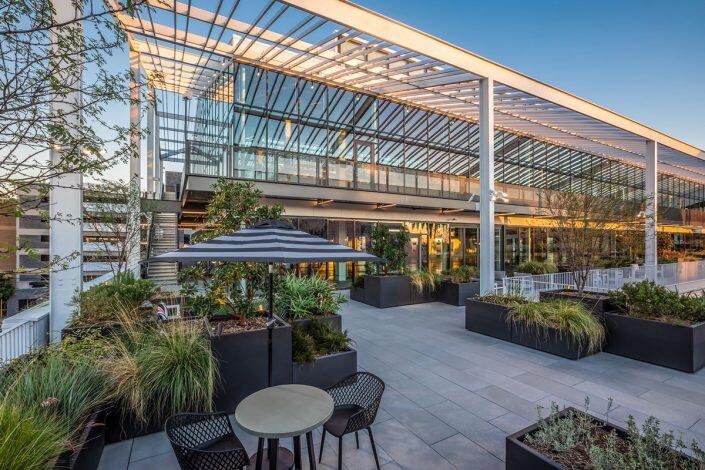Hudson Pacific Properties has a thing for the movies.
Almost 15 years ago, the West Coast real estate firm made its very first purchase, paying $200 million for Hollywood’s Sunset Gower Studios, the former Columbia Pictures headquarters that had birthed everything from the Three Stooges to “Full House.” Shortly thereafter, in 2008, it bought the original Warner Bros. studio for $125 million, renaming it Sunset Bronson Studios.
“There is a lot of capital going into the entertainment business,” Hudson Pacific CEO Victor Coleman, who now controls at least 1.2 million square feet of soundstages, said at the time.
It was a prescient bet. Last year, Blackstone Group paid $1.7 billion for a 49 percent stake in Hudson Pacific’s studio business.
The deal was just one example of how institutional investors, spurred by ever-increasing demand for streaming content, have grown more comfortable with an asset class they once spurned as too risky.
Revenue from digital entertainment jumped 35 percent in the U.S. from 2019 to 2020, according to CBRE.
Investors and developers say there’s simply not enough space to churn out the number of shows produced for Netflix and Apple TV+. Even though more than 1.2 million square feet of soundstage space was planned or under construction as of June, brokers and developers say Los Angeles needs more.
Once the domain of a handful of developers such as Hudson Pacific and Hackman Capital, the business in now seeing a torrent of cash from investors better known on Wall Street than on Sunset Boulevard.
Consider the $500 million venture formed this month to build and acquire up to 750,000 square feet of soundstages. It’s backed by King Street Capital Management, a New York-based global money manager that oversees $20 billion, Canadian pension fund Alberta Investment Management Corporation and even an undisclosed sovereign wealth fund.
The face of the partnership is New York real estate investor East End Capital, which owns studios in Glendale and plans to turn a cold storage facility near the Arts District into a 237,000-square-foot production studio.

It’s hard to ignore “this explosion in demand for content and the increased propensity for longer-term leases,” East End co-founder Jonathon Yormak said in an interview.
Granted, some streaming companies are building their own studios, bypassing developers. In October, Apple said it was expanding in Culver City with a new 500,000-square-foot complex at properties it bought in 2020 for about $163 million. While Apple didn’t say whether the complex would include soundstages, Apple TV+ is based across the street.
Meanwhile, real estate developers are on the prowl. A joint venture between L.A.-based Worthe Real Estate Group and San Francisco’s Stockbridge Capital plans to spend $500 million to redevelop a 32-acre Burbank studio that they bought from Warner Bros.
A “Band-Aid”
Back in 2008, when Hudson Pacific bought Sunset Gower, most studios were owned by production companies. Warner Brothers had its own studio, as did Fox, Paramount and CBS. Television producers typically leased a studio one season at a time, making it a risky investment if a show wasn’t renewed.
“Most of the institutional investors 10 years ago, they didn’t want to talk about a studio deal,” said Craig Peters, an industrial broker at CBRE. “The only reason they were going to do that was to put a Band-Aid on a problem asset until they could find a long-term tenant.”
Lehman Brothers, PCCP and Pacific Ventures took that wager in 2004, splashing out $125 million to buy the 14-acre Culver Studios from Sony. They then tried and failed for years to offload the purchase. Not even Lehman’s 2008 bankruptcy produced a bidder. Finally, in 2014, Hackman Capital bought Culver Studios for the deeply discounted price of $85 million.
Invest and chill
The world of entertainment has been upended since then. Netflix reported $25 billion in revenue and 209 million subscribers last year, compared with $5 billion and about 50 million customers in 2014.
Craig Solomon, whose Square Mile Capital Management now owns New York’s sprawling Silvercup Studios together with Hackman Capital, recalls a 2018 brainstorming session in a Manhattan conference room. The conclusion: People were turning to new ways of consuming content, and the streaming industry was responding. The likes of Netflix, Apple and Disney had started to rent studios — and to do so for longer terms, burnishing their creditworthiness compared with the owners and operators that had taken on shorter-term tenants.
A year after that meeting, Square Mile teamed up with Hackman Capital to buy MBS Media Campus, a 587,000-square-foot studio in Manhattan Beach, for $650 million.

Harlow at Hudson Pacific Properties’ Sunset Las Palmas Studios
“You suddenly had credit behind the obligation to rent, and you could lease the space for a longer period of time,” said Solomon, whose firm now owns close to 5 million square feet of soundstage space with Hackman.
Deutsche Bank waded in three years ago. The German bank, which had loaned Hackman $50 million to help buy Culver Studios, provided a $590 million loan after the firm secured Amazon Studios as a tenant in 2017, and another $30.2 million of financing in 2019. That will help Hackman double Culver Studios to 721,000 square feet.
It wasn’t alone. Blackstone’s investment in Hudson Pacific came about thanks to two global banks, Goldman Sachs and Barclays. Goldman provided about $630 million in a five-year, floating-rate loan.
“We’ve never seen pricing around the debt on studio businesses and the studio industry that we are seeing now,” Coleman, the Hudson Pacific CEO, said on an August earnings call.
Another piece of the puzzle is booming demand for industrial real estate — fueled, yet again, by the pandemic. In the past, both industrial and studio space could be in the same building — an empty warehouse could be used for a few months as a set for a television show. Now that industrial vacancy rates have dropped to about 1 percent across L.A., it’s tougher to find space.
Capital is being used for “repurposing older, obsolete buildings” as well as ground-up development, said Kevin Shannon, who co-heads Newmark’s U.S. capital markets team.
Converting warehouses will accommodate most production companies. Even so, some institutional investors want to be able to accommodate any and every type of studio.
That may explain why Blackstone and Hudson Pacific decided this year to invest $190 million to build a 240,000-square-foot production facility in Sun Valley, California. Bain Capital has also paired up with Bardas Investment Group to build a $420 million production facility in Hollywood, complete with 426,000 square feet of office space and 113,000 square feet of soundstages.
For all its acquisitions, Hudson Pacific’s studios make up just a fifth of its total property portfolio, according to its most recent earnings report. Still, the company hopes that money it earns from studios will account for at least a third and perhaps even half its net operating income, Coleman said on the August call.
“We are right now monitoring and underwriting and working earnestly on more studio deals than we are in office deals,” Coleman said.

